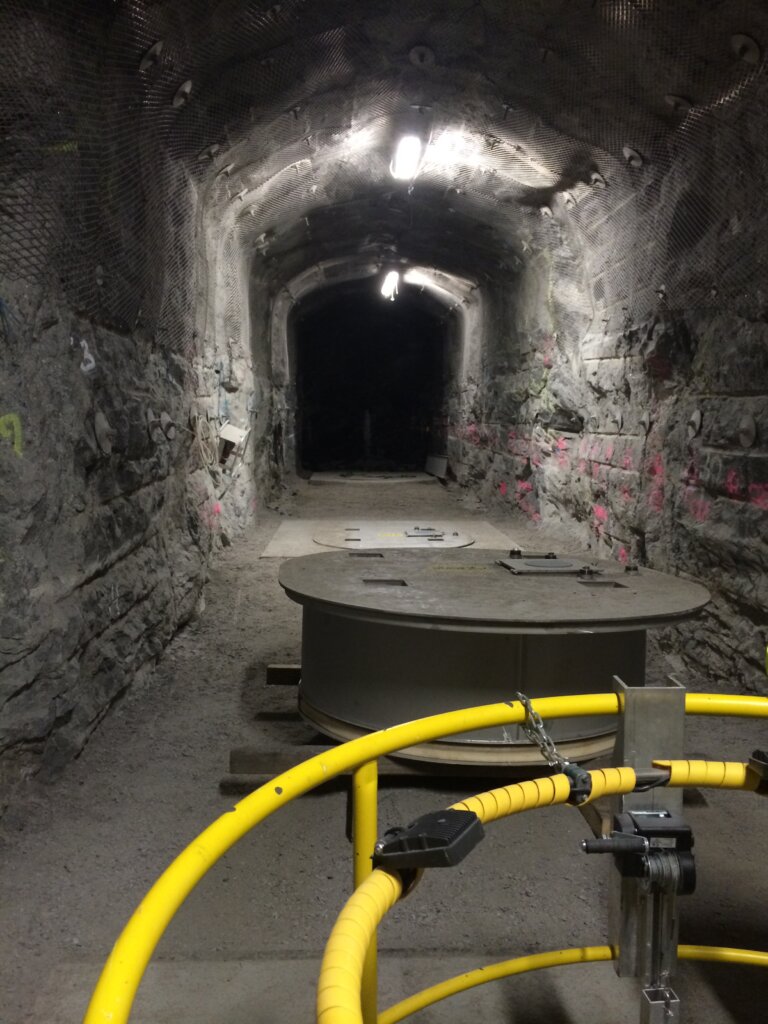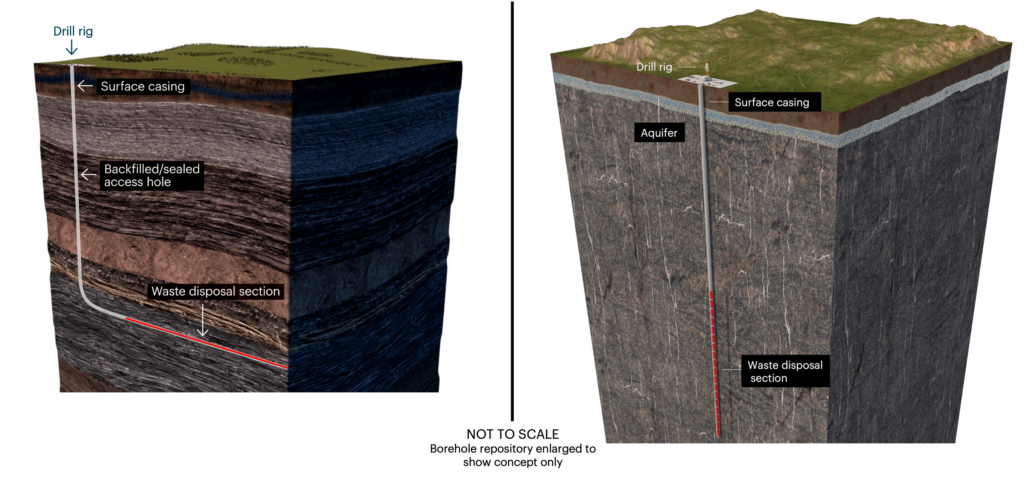What are the types of nuclear waste repositories?
Virtually all global committees of scientists convened to study the disposition of nuclear waste have concluded that deep geologic burial is the best disposal solution. Using deep geologic disposal minimizes the hazard of radioactive releases and ensures that the material is not diverted for proliferation purposes. For the last couple of decades, this has meant utilizing a mined repository approach to nuclear waste disposal. More recently, the viability of using a borehole repository for nuclear waste has given different governments an additional option for disposing of waste.
Mined Repositories
A deep mined repository consists of a network of underground tunnels and rooms that are used to house nuclear waste canisters. These repositories are usually between 200 m – 1000 m deep and require the excavation of a large amount of rock. There are currently two mined repositories in construction: Finland’s repository at Onkalo and Sweden’s repository at Forsmark. The repository at Onkalo is expected to be large enough to hold 6,500 metric tons of spent nuclear fuel over an estimated operational lifetime of 100 years. The repository at Forsmark has an expected capacity for more than 12,000 metric tons of spent nuclear fuel.
With a mined repository concept, there are facilities at the surface and underground which are needed for the construction, operation, and closure of the repository. The surface facility is also used to prepare the radioactive waste for emplacement. High-level waste is transferred from transport and storage casks to disposal canisters. Waste is transported using lifts, road vehicles, or ramps. Thus, the waste can be retrieved as long as the mined repository is un-sealed and operational. Canisters encasing the waste will act as one of the engineered barriers, providing much of the isolation during the first portion of the waste’s lifetime. In the long term, the surrounding host rock will provide long-term safety.

Borehole Repositories
A deep borehole repository utilizes directional drilling technology to drill 300m to 3000m into a host rock to emplace nuclear waste canisters. Boreholes can be drilled vertically, slanted, or horizontally, depending on the disposing organization’s needs and host geology. Constructing a borehole repository facility requires drilling the hole, installing casing in the drillhole (casing is a liner that will protect the surrounding rock), and then sealing it upon closure. While the repository is operational, surface operations similar to that of a mined repository will be required for handling and transporting the waste canisters. Standard drilling equipment can be used to lower and retrieve the canisters into or out of the operational repository.
Smaller diameter drillholes lessen the amount of host rock that is disturbed. The length of the borehole will determine the amount of waste it can house. For a horizontal borehole, if the horizontal section of a borehole was 2 miles (3.2 km) long, it could hold approximately 240 metric tons of nuclear waste.
Although there is not a borehole repository for high-level radioactive waste, there are existing borehole repositories for low-level radioactive waste in Ghana, Malaysia, and the Philippines.

Related Content:
Additional Resources

Deep Isolation Story
It is time to consider alternative options to address the nuclear waste challenge by working alongside communities for mutually beneficial solutions.


FAQS
Deep Isolation answers frequently asked questions about our technology, our process, and safety.
